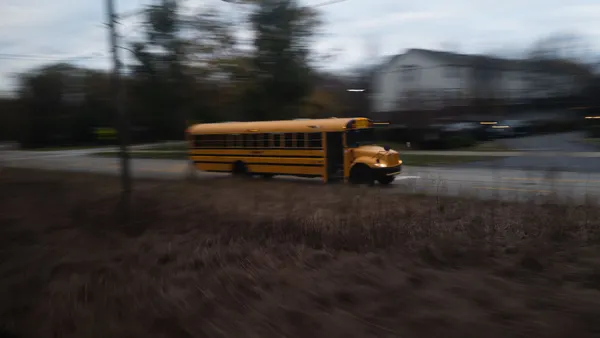The school desegregation ordered under Brown v. Board of Education remains "ongoing," U.S. Attorney General Merrick Garland said Tuesday — a sentiment echoed by U.S. Education Secretary Miguel Cardona — during a Washington, D.C., event attended by both Biden administration leaders to celebrate the 70th anniversary of the landmark case.
"It is urgent" that these desegregation efforts continue, Garland said at the event hosted by the U.S. departments of Justice and Education — also attended by three members of the "New Orleans Four." On Nov. 14, 1960, four 6-year-old girls — including prominent civil rights activist Ruby Bridges — desegregated two New Orleans elementary schools in an action that would turn Bridges into a poster child for school desegregation.
"We also join together knowing that fulfilling Brown’s mandate — a nation where education is 'a right which must be made available to all on equal terms' — requires our continued work," said Garland on Tuesday.
The Department of Justice's Civil Rights Division is still overseeing the implementation of desegregation orders across more than 130 school districts, affecting 900,000 students in 1,500 schools.
Over 4 million students — or twice the number since 2007 — are enrolled in school districts or charter schools that have socioeconomic integration policies in place, according to The Century Foundation.
Cardona told the gathering that over the 70 years since Brown, "we've often struggled" to live up to its promise.
"Today, we have a system where we have normalized underinvesting in schools that serve majority Black communities," he said. "We’ve normalized a culture of low expectations for some students … and then we give them inadequate resources and support."
Diversity has been well-documented to benefit students' academic outcomes. Students in integrated schools, for example, are less likely to drop out than those in segregated, high-poverty schools, according to 2004 Johns Hopkins University research cited by the foundation. That research came upon the 50th anniversary of Brown.
During the push to desegregate schools in the 1970s and 1980s, Black students' high school dropout rates decreased by 2 to 3 percentage points, while White students' rates remained the same, according to a 2004 study published in American Economic Review.
Still, despite these benefits, many schools remain highly segregated today.
Segregation between White and Black students in the nation's 100 largest districts has climbed by 64% since 1988, according to research released by Stanford University's Educational Opportunity Project earlier this month.
“School segregation levels are not at pre-Brown levels, but they are high and have been rising steadily since the late 1980s,” said Sean Reardon, professor of poverty and inequality in education at Stanford Graduate School of Education and faculty director of the Educational Opportunity Project, in a May 6 statement.
The study found that, in most large districts, school segregation has increased despite decreases in residential segregation and declines in racial economic inequality.
Rather, it's policy changes such as more school choice options that are driving recent increases in segregation, according to Reardon and study co-author Ann Owens, a professor of sociology and public policy at the University of Southern California.
“There’s a tendency to attribute segregation in schools to segregation in neighborhoods,” said Owens in a statement. “But we’re finding that the story is more complicated than that.”














